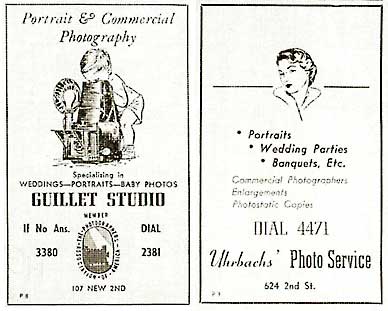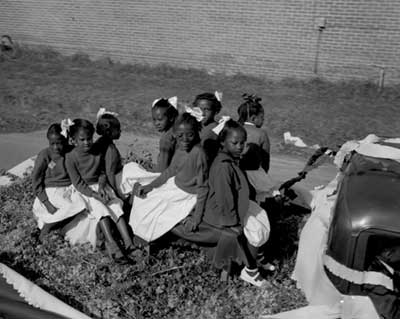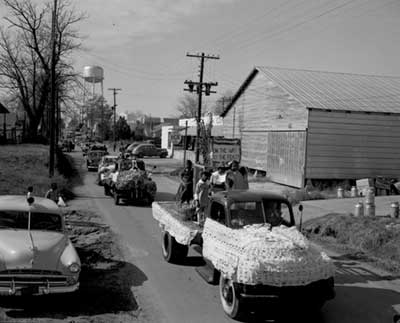Civil War to Civil Rights:
The African American Community in Natchitoches, Louisiana
Dayna Bowker Lee
Introduction to the Virtual Tour Project
In 2006, the Louisiana Regional Folklife Program at Northwestern State University of Louisiana [NSU] received a grant from the Cane River National Heritage Area [CRNHA] to support the creation of an online tour of places of importance to the African American community in Natchitoches. This project was not intended to focus on the institution of slavery, to which people of color had been subjected since 1718 in Louisiana. Rather, this project was designed to document the evolution of a community and to celebrate some of the people who helped to shape that community into what it is today.
While researching this project, we found a story that was not always easy to tell. The bright promise of liberty that came with Reconstruction was compromised by the realities of Jim Crow—intimidation, prejudice, unequal opportunities in education, employment, and economic pursuits—and these dark days of our national history cannot be forgotten. But the focus of this story is on a strong, self-reliant community built upon the hard work, strength of family, and underlying beliefs of its people. Their ability to look beyond their problems, to find humor in their condition, and to instill in successive generations the pride and the sense of identity engendered in their accomplishments was integral to the transition from newly freed individuals into a fully vested community.
This is the story of the African American experience in Natchitoches between the Civil War and Civil Rights. It tells of the coming together as a people and working to build the social, economic, and political institutions necessary to support a growing community. It is an important story that needs to be told.
Thanks
Our appreciation goes to Mary Linn Wernet and Sonny Carter of the Cammie G. Henry Research Center, NSU [CHRC], who provided numerous images and invaluable information on the Urbach and Guillet collections. Special thanks to photographer Curtis Guillet, who generously allowed the use of photographs from his collection. Thanks, also, to Don Sepulvado of the NSU Press for his photograph of the Don Theatre, and to H. F. Pete Gregory for his photograph of the Roque House.
Transcripts of interviews conducted under projects initiated and funded by CRNHA and Cane River Creole National Historical Park, as well as archived interviews from the Louisiana Folklife Center, the Creole Heritage Center, the Cammie G. Henry Research Center, and the Louisiana Regional Folklife Program, were used to give voice to the experiences of community members. Our gratitude is extended to the agencies and participants in these projects. [references] Our thanks go especially to those community members whose words were used to tell this story:
- Hattie Anderson
Olis Antee
Grace Baptiste
Dr. Herbert Baptiste
Pearline Baptiste
Henry Barrow
Vera Bernstein
Bessie Blake
L.C. Cox
Ophelia Dumars
Atlas Helaire
Frankie Ray Jackson
Ben D. Johnson, Sr.
Alma L. Johnson
Reverend Thomas Johnson
Evelyn Jones
Paul Morgan
Pearl Payne
Dorothy Jackson Presley
McDuffie Raymond
James Roberson
Alvin Sompayrac
Edward Ward
Laurence Vaughn
John Winston
Credits
- Melissa Hagen Dezendorf, Research Coordinator and editor
Dr. Susan E. Dollar, Research Specialist
Rolonda Teal, Research Consultant- African Americans in Natchitoches by Rolonda Teal, whose work informed this project, can be purchased through Arcadia Publishing (http://www.arcadiapublishing.com) and national outlets after October 1 2007
- Michael Fontenot, map and graphics
Stacy Fontenot, graphics and web design
Jennifer Morrison, Research Assistant
Dr. Dayna Bowker Lee, Project Coordinator and editor

Joseph W. Urbach and Curtis Guillet ads: 1950 Natchitoches Telephone Directory, CHRC, NSU


Thanksgiving parade down Amulet Street, Guillet Collection, #2388, n.d., CHRC
